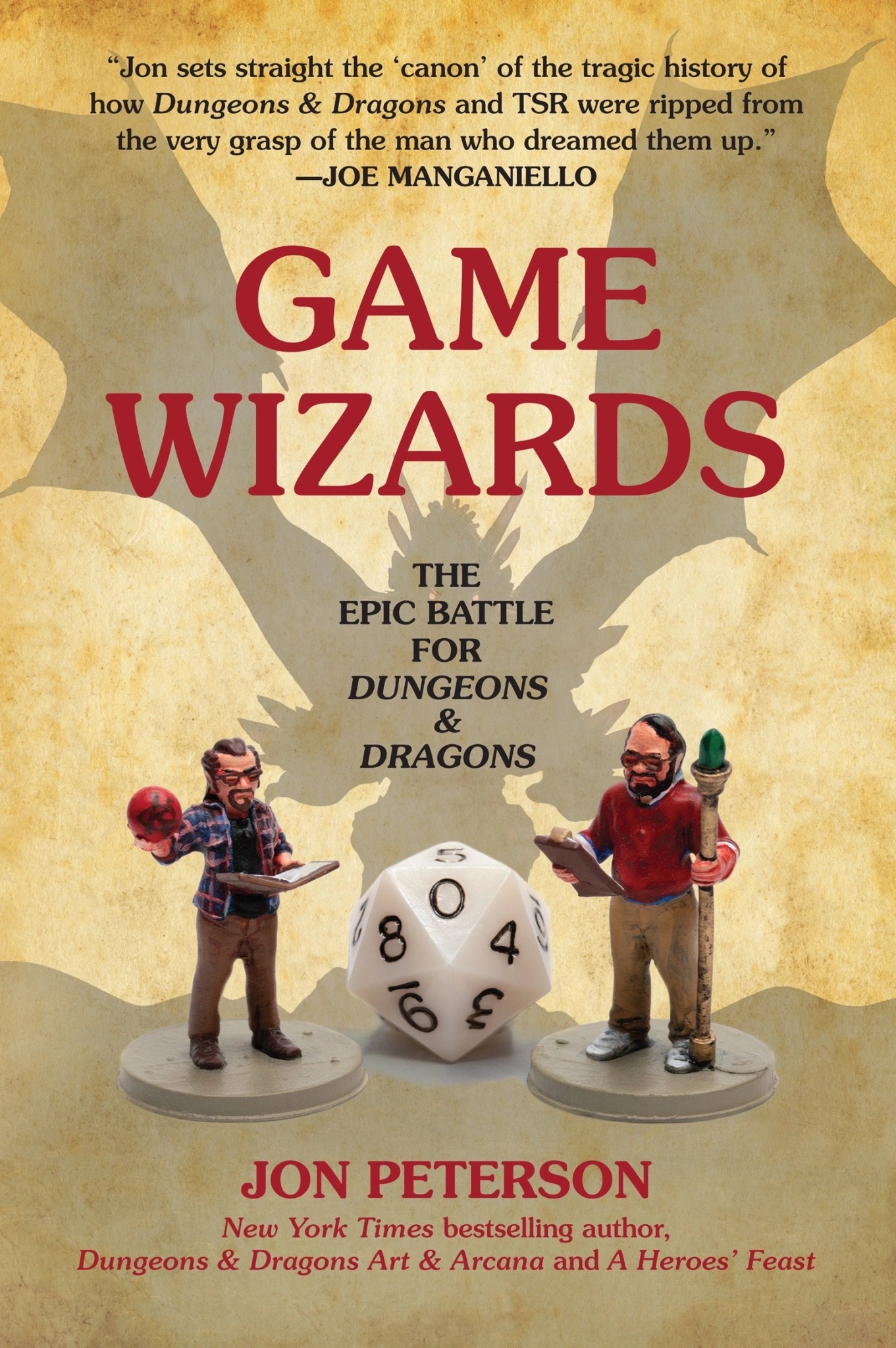
Game Wizards
I was introduced to Dungeons and Dragons and role-playing games when I was six years old. Chris, my older brother, had brought the Moldvay Basic Set home one afternoon. Admittedly, I didn’t really understand what I was doing other than exploring a planet named Oerth, but over the next few years we would play more and more. My older brother, his friends, and the little kid, me. We eluded Orcs through the Gnarley Forest, crossed the Valley of the Mage, and hunted dragons. The rest as they say is history. Little did I know, simultaneously the game I loved was eluding its own demons and slaying its own dragons.
In the book Playing at the World (Unreason Press, 2012) author Jon Peterson chronicles the developmental history of the mechanics of Dungeons and Dragons.
In Game Wizards (MIT Press, 2021) Peterson returns to explore the people who created and published Dungeons and Dragons. Like an intrepid ranger tracking through the dark forest, Peterson uncovers the truth about the legendary battle for the world’s most famous role-playing game.
Game Wizards is a non-fiction account of the first ten years of TSR, and the people who worked there. Its main goal is to dissect and analyze the personal feud between the game two creators, Dave Arneson and Gary Gygax. The book shows how D&D rose from the mind of two men to become a pop culture juggernaut. It chronicles how the feud the two men created caused a legal confrontation that obscured the true history of the game and its creators, for decades. The Great War as Arneson predicted, would come to dominate the path of Dungeons and Dragons, the gaming industries, and copywrite law itself. On November 4, 1976, a memo was sent around the offices of TSR which forbade employees from moonlighting with other companies.
“Arneson did not take the memo well either. A copy survives in which he has crossed out Gygax’s title, “President,” and replaced it with “Dictator.”(Peterson, Pg. 96).
Peterson does an outstanding job of untangling the webs of contradictory claims that have shaped the competing narratives surrounding the games creation, and its creators for nearly fifty years. He notes the eventual fall of the company, including poor management, unfulfilled promises, hubris, and generous amounts of nepotism. Peterson gives the reader clear and concise facts which allows them to come to their own conclusions about the Great War.
Game Wizards gives the reader unfettered glimpses into Dungeons and Dragons, from its humble creation to its subsequent publishing, its meteoric rise on through its years of calamity. It’s a tale of high drama and shocking pettiness on both sides. It discusses the role the Satanic Panic had on the fans, the game, TSR and pop culture. In a follow up interview on the book’s press tour Peterson asks, “What if Tunnels and Trolls had been found with the Egbert kid in the steam tunnels, instead of D&D” (Kirtley, 2021). What if indeed. Petersons softly posits throughout the book; would Dungeons and Dragons have risen so far without the media spotlight?
There is an abundant amount of information in this book to entice individuals, with no interest in D&D or the hobby, including, larger than life personas, rags to riches stories, epic feuds, and a dramatic ending. By the end of the book the games creators had lost control of the very game that had made them famous, to the heir of the Buck Rodgers IP.
However, if you are a fan of Dungeons and Dragons, you’re in for an incredible journey. Have you have ever wondered how D&D began? Have you ever wondered what propelled a niche game into a dominate force in pop culture? If you answered yes to any of these questions, then this book is for you.
Game Wizards is a book for anyone who has ever asked where the game came from and who created it. It’s a must have for any serious historian of the game and the hobby. I recommend reading both Game Wizards and Playing at the World, both by Jon Peterson.

Post a comment